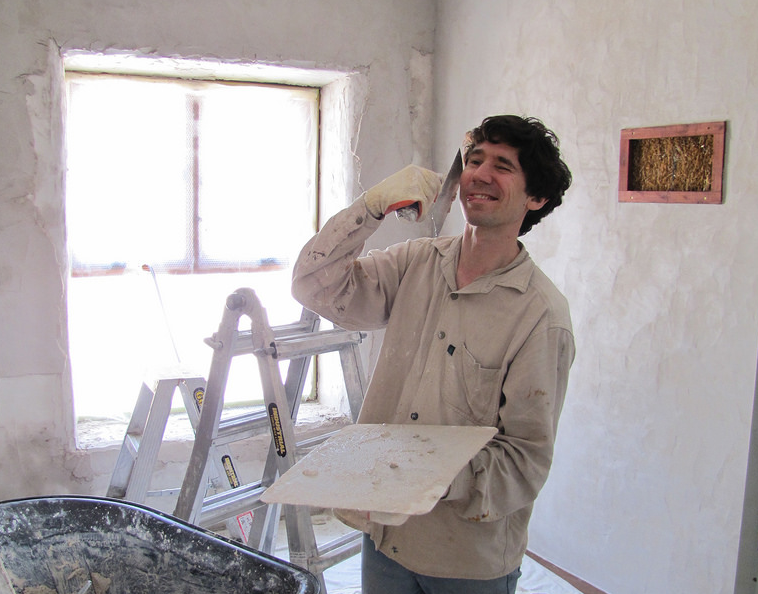Plastering Providers Near Me: Discover Trusted Neighborhood Plastering Professionals
Plastering Providers Near Me: Discover Trusted Neighborhood Plastering Professionals
Blog Article
Key Tips and Tools for Successful Plastering in Your Home Renovation Ventures
Achieving a remarkable plaster finish in your home renovation tasks calls for a mix of the right tools and tested strategies. Essential implements such as the hawk and trowel are important for effective application, while appropriate surface prep work lays the structure for success. Furthermore, comprehending the nuances of mixing plaster and applying it in thin layers can significantly influence the last end result. As we discover these basic aspects, it ends up being obvious that preventing typical challenges can elevate your plastering abilities-- ensuring your next project not just satisfies but goes beyond assumptions.
Vital Smudging Devices
The important tools include a range of applies made to assist in the plastering procedure efficiently and effectively. Trick elements consist of a hawk, which is a level, square device made use of to hold the plaster while using it to surface areas.

Furthermore, a mixing pail is required for preparing plaster, guaranteeing the best uniformity before application. A plastering brush or sponge serves for finishing touches and smoothing out appearances. Finally, safety and security equipment such as gloves and masks must be consisted of to safeguard the customer from dirt and chemicals. With each other, these crucial plastering devices enable both specialists and do it yourself fanatics to achieve high-grade cause their smudging jobs.
Surface Prep Work Strategies
Correctly preparing the surface prior to plastering is vital for making sure attachment and attaining a perfect coating. The primary step includes cleaning the surface area to get rid of any type of dust, grease, or old paint that may impede the plaster's ability to bond effectively. An extensive clean with an ideal cleaning service is recommended, followed by permitting the surface area and washing to dry entirely.
Next, examine the surface for any type of flaws or fractures. These must be full of an appropriate filler substance and permitted to heal according to the maker's guidelines. For permeable surfaces, using a primer is important to boost and develop a consistent structure adhesion.
Additionally, it is essential to make sure that the surface area is steady and structurally sound. Any type of loose materials, such as flaking paint or damaged drywall, must be repaired or gotten rid of. Consider utilizing a scrape layer to boost grip. if functioning with stonework surfaces.
Combining Plaster Like a Pro

Utilizing a clean mixing container, pour the water initially, then progressively add the plaster powder while mixing continually. This approach assists to prevent clumping and makes certain an also circulation of products.
When mixed, permit the plaster to rest for a couple of mins to enable the plaster crystals to moisturize completely. This pause enhances workability and decreases the threat of cracking throughout application. By adhering to these actions, you can mix plaster like a pro, establishing the structure for an effective gluing project in your home improvement ventures.
Application Approaches for Smooth Finishes
With the plaster mix prepared to the optimal consistency, the next step includes choosing proper application techniques to achieve a smooth coating. This tool enables for a fine, also circulation of plaster throughout the surface area while decreasing trowel marks.
Begin by using a charitable quantity of plaster to the surface area making use hop over to here of the trowel, guaranteeing it sticks well. Once the preliminary coat is used, make use of a sweeping activity to smooth the surface, using even pressure.
For the final touches, a wet sponge can be utilized to refine the surface additionally. Lightly mist the plaster with water and delicately rub the surface area to achieve a sleek effect. Always remember to operate in tiny areas to preserve control over the application procedure, ensuring a smooth, expert surface throughout your plastering project.
Typical Errors to Avoid
When embarking on a smudging task, avoiding common blunders is essential for accomplishing a flawless surface. Make sure that all dust, grease, and find loose products are removed prior to applying plaster.
Another usual blunder is applying plaster too thickly. Thick layers can crack as they dry, compromising the honesty of the coating. Rather, select several thin layers, enabling each coat to completely dry totally prior to applying the following.
Furthermore, poor blending techniques can lead to inconsistent structure and workability. here Always adhere to the manufacturer's instructions for blending ratios and thoroughly mix the plaster to accomplish an uniform uniformity.

Timing additionally plays a vital role; plaster must be applied while the substrate perspires to improve bond. Finally, avoid making use of inappropriate devices. Top notch trowels and floats can make a substantial distinction in accomplishing a smooth coating. By staying away from these usual challenges, you can improve the high quality and long life of your plastering job, leading to an extra specialist cause your home renovation undertakings.
Final Thought
Effective gluing calls for a thorough understanding of important devices and methods. Proficiency of these components not just contributes to the visual allure of a room however additionally ensures durability and longevity in gluing jobs, making them essential to successful home improvement ventures.
A float is one more important tool, which helps in leveling the plaster and accomplishing a consistent surface.

By complying with these steps, you can blend plaster like a professional, establishing the structure for a successful plastering task in your home enhancement undertakings.
Lightly haze the plaster with water and delicately massage the surface area to achieve a polished impact.
Report this page